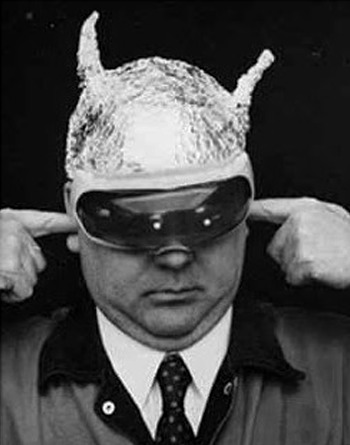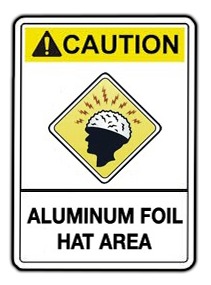 Courtesy of a Sunday op-ed, “Mindfulness as Technology” might stick with me for a least a week!
Courtesy of a Sunday op-ed, “Mindfulness as Technology” might stick with me for a least a week!
Ok, so I still like to read newspapers. There’s just something cathartic about being able to crumple up the stupidity I come across, and it takes a lot less time than entering a log-in to leave an angry comment. One is arguably empowering, the other simply self-aggrandizing. Besides, the Internet is great ‘n all, but compared to 130 years of industrial age headline-induced anger, the web is still preoccupied with its own genitalia.
For me, reading the paper is an exercise in delayed gratification. I first physically disassemble and reorder its parts from responsible to frivolous, from world affairs to the national scene, and from what’s happening around the state to local news. I save the culture, arts, and entertainment bits for last. It’s fairly meditative, so it fit to come across Teresa Jordan’s op-ed, “Seizing a  moment for mindfulness.” (Don’t ask me why titles are changed for online versions, but it might be a good thing you can’t crumple a laptop. Had I seen the online one first I would have skipped the piece).
moment for mindfulness.” (Don’t ask me why titles are changed for online versions, but it might be a good thing you can’t crumple a laptop. Had I seen the online one first I would have skipped the piece).
Teresa Jordan is the author of The Year of Living Virtuously (Weekends Off), which is essentially about surviving distraction and obliviousness. Self-help books are lame – Where Excuses Go to Die once had a chapter called “Everything I Need to Know I Learned from Chuy” that mocked the ones you find in prison – but these days so many are being written by people who hate ’em too that at least their titles reflect the removal of an important stick, if you get my drift. That makes it much easier to fight the urge to laugh at the sight of one. Plus I’m getting older, so my decades-long diet of nonfiction treachery, high weirdness, and absurdity is beginning to require balance.
 In the op-ed, Jordan claims she was moved by Ben Franklin’s own charted route to moral perfection. Franklin never got there; he was actually surprised to find out how many faults he really had (sounds insufferable). But his journey was apparently inspiring, so Jordan sought to find the differences between how we see ourselves, who we want to be, and how we actually act.
In the op-ed, Jordan claims she was moved by Ben Franklin’s own charted route to moral perfection. Franklin never got there; he was actually surprised to find out how many faults he really had (sounds insufferable). But his journey was apparently inspiring, so Jordan sought to find the differences between how we see ourselves, who we want to be, and how we actually act.
Jordan’s biggest personal challenge turned out to be achieving presence of mind, i.e., being in the moment. She discovered she acted like a jerk when she became overwhelmed, was dismissive of simple responsibilities, and complicated things when her mind was elsewhere. Her takeaways had a lot to do with the pace of daily life, and I couldn’t agree more: the sheer velocity of its visuals seem to be eroding our ability to find moments of calm, pause, and poise.
 Jordan reminds us of a “Good Samaritan” study undertaken by psychologists in 1973 in which tardy seminarian subjects rushed past a man needing help, some even viewing him as an obstacle. Precious few students stopped to help, and the results are so solid, the only plausible conclusion is that ethics become a luxury as life speeds up. Forty years later, most of us are hip to that fact in our fast-paced, digital world, but we do hide behind it. It’s called “active laziness,” and it means we’re building a treehouse to live in, but the tree is made of sugar. So what’ll happen when it rains?
Jordan reminds us of a “Good Samaritan” study undertaken by psychologists in 1973 in which tardy seminarian subjects rushed past a man needing help, some even viewing him as an obstacle. Precious few students stopped to help, and the results are so solid, the only plausible conclusion is that ethics become a luxury as life speeds up. Forty years later, most of us are hip to that fact in our fast-paced, digital world, but we do hide behind it. It’s called “active laziness,” and it means we’re building a treehouse to live in, but the tree is made of sugar. So what’ll happen when it rains?
A well played case in point is Jordan’s mention of Antoinette Tuff, the high school bookkeeper who sweet-talked an AK-47 from the hands of an active shooter. We live in a world of instant gratification, the antithesis of levelheadedness and the mother of knee-jerk reactions. Tuff, however, had been working her muscles of passivity and contemplation. She regularly meditated. She prayed. She studied the Bible. And this consistent personal reflection may be just what prepared her for the milliseconds of serenity that would save her life and the lives of others, giving her the presence of mind to talk the gunman into surrendering.
 Jordan says that an ability to “summon an internal calm,” rather than react reflexively, doesn’t require adherence to any particular religion. Corporations, the military, and treatment groups of all stripes effectively use non-religious programs designed to help their people find a center and stay grounded. Whether they’re based in the spiritual or not, such pursuits not only prevent panic, anxiety, and depression, they help kill excuses dead, like bug spray. In fact, both failed and successful 12-steppers alike describe this element of recovery as its most crucial and creditable takeaway (and I’ll consider the opinions of beat-up AA types before I listen to self-congratulatory yoga people any day).
Jordan says that an ability to “summon an internal calm,” rather than react reflexively, doesn’t require adherence to any particular religion. Corporations, the military, and treatment groups of all stripes effectively use non-religious programs designed to help their people find a center and stay grounded. Whether they’re based in the spiritual or not, such pursuits not only prevent panic, anxiety, and depression, they help kill excuses dead, like bug spray. In fact, both failed and successful 12-steppers alike describe this element of recovery as its most crucial and creditable takeaway (and I’ll consider the opinions of beat-up AA types before I listen to self-congratulatory yoga people any day).
What it really comes down to for me is using anything that helps me raise a middle finger to the temptation of excuse making.
So is it possible to use “mindfulness” as just as much of a tech tool as the devices I depend on for distraction? No doubt it is. The hard part is blocking out all that other stuff (get out the foil hat!). But I do like the idea of developing it as a tool I can reach for (I hope I still like it next week).
It’s funny that Jordan’s concept found me via one of my more pedestrian literary diversions, the Sunday paper, but I guess messages tend to find those who seek them. And no matter how much information flows online, not everything will be electronic. That said, I’ll probably buy the e-version of Jordan’s book.
